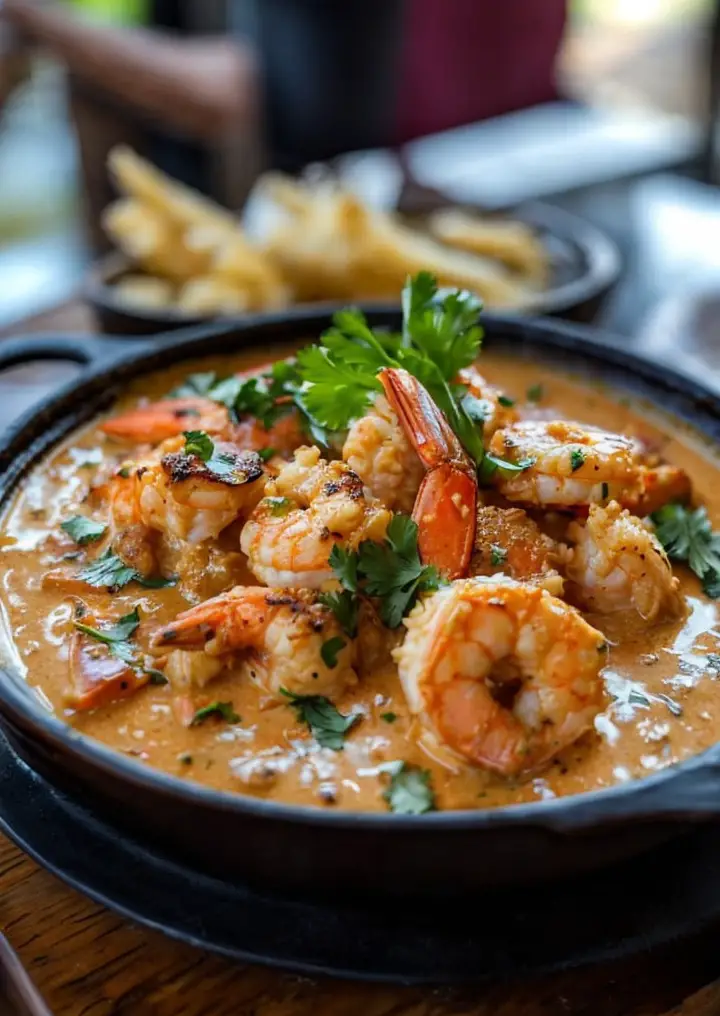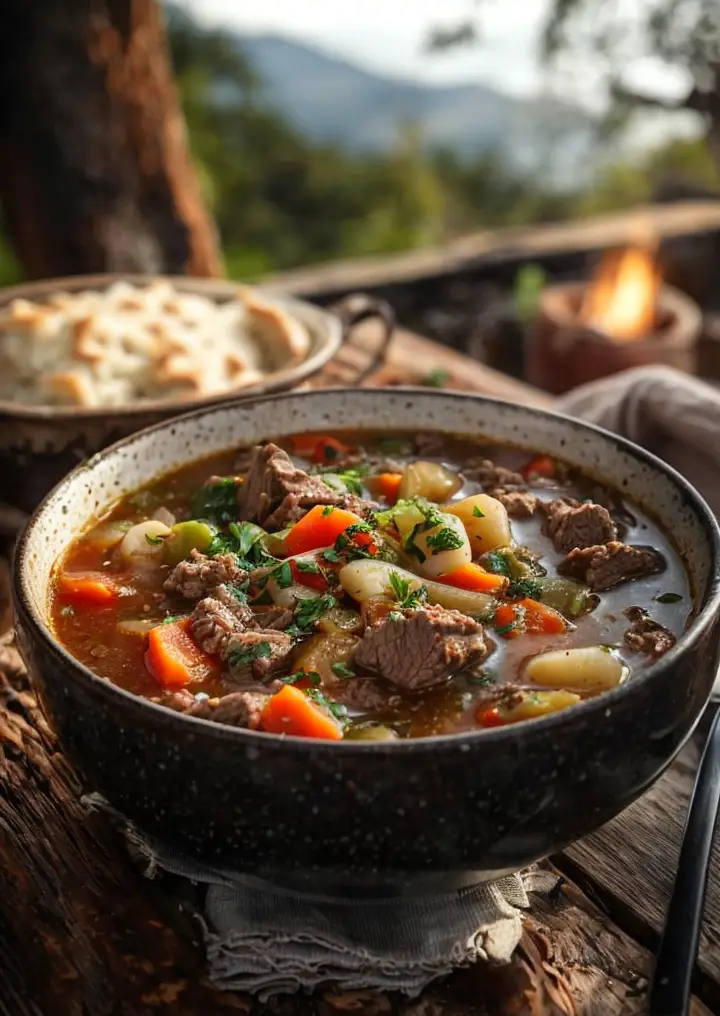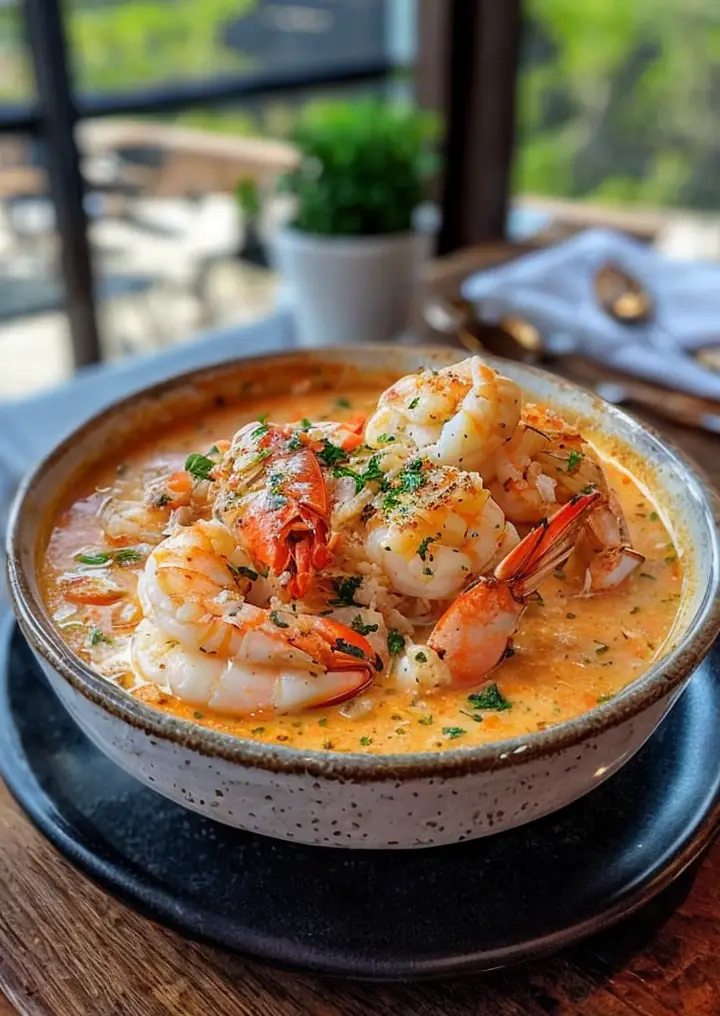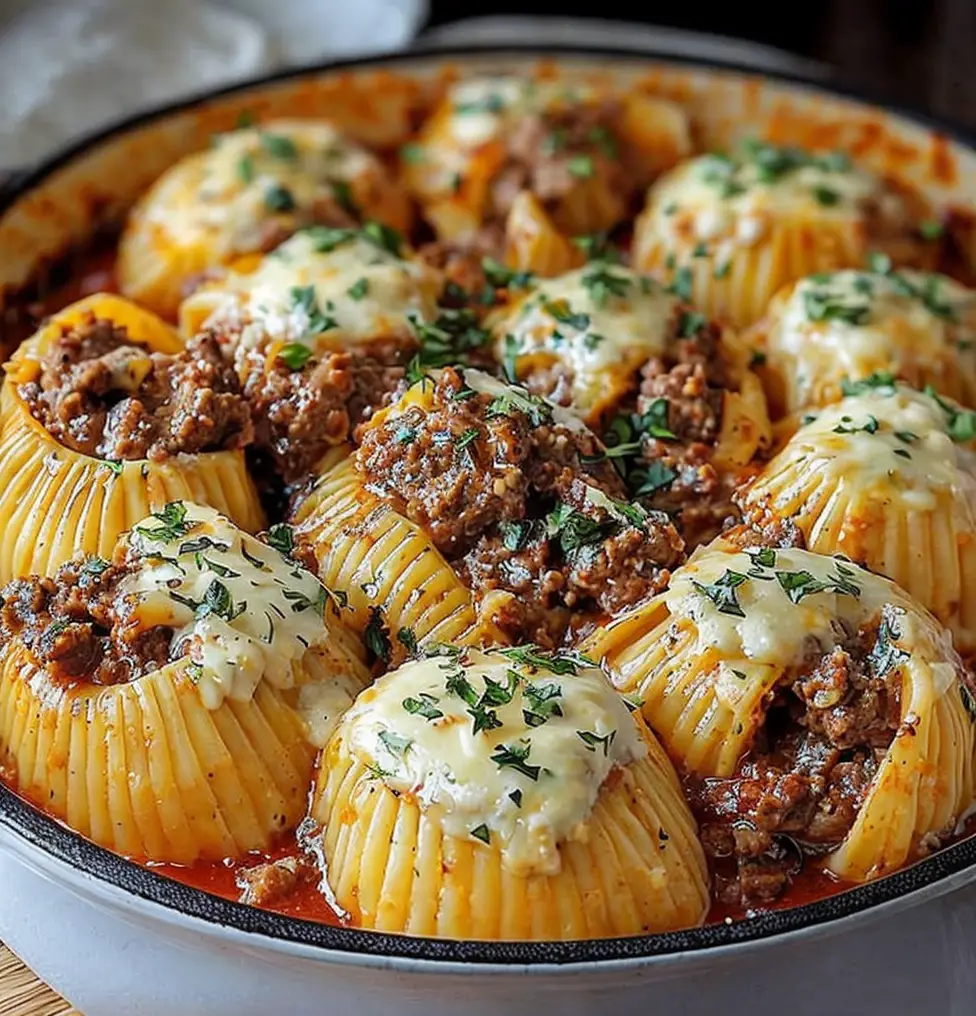Greek Chicken Meatballs with Tzatziki: A Flavorful Mediterranean Delight
Indulge your taste buds with these delicious Greek Chicken Meatballs paired perfectly with a creamy tzatziki sauce. This dish captures the essence of Mediterranean cuisine, showcasing the vibrant flavors of herbs, spices, and fresh ingredients. Every bite offers a juicy chicken meatball, seasoned with classic Greek flavors like garlic, oregano, and parsley, which create a delightful mix that is both savory and refreshing.
This Greek Chicken Meatballs recipe is more than just a meal; it’s a cultural experience. The lightness of the chicken combined with the coolness of the tzatziki makes it perfect for any occasion, whether a casual family dinner or an impressive gathering with friends. Serve these meatballs on a platter or make them the star of your plate with a side of your favorite veggies, rice, or pita.
Quick Recipe Highlights
- Flavor Profile: The Greek Chicken Meatballs are infused with aromatic spices and fresh herbs that create a well-balanced flavor, while the tzatziki sauce adds a zesty and cooling effect.
- Texture: These meatballs offer a tender and juicy bite, complemented by the creamy texture of the tzatziki sauce making every mouthful delightful.
- Aroma: The irresistible aroma of garlic, dill, and lemon in the meatballs and tzatziki will fill your kitchen and invite everyone to the table.
- Visual Appeal: The vibrant colors of the meatballs, paired with the fresh green herbs and creamy white tzatziki, make this dish beautiful and appetizing.
- Skill Level Needed: This recipe is suitable for beginners, as it involves straightforward measurements and cooking techniques that anyone can master.
- Special Equipment: No special equipment is required other than basic kitchen tools like mixing bowls, measuring cups, and a frying pan.
Recipe Overview
- Difficulty Level: The ease of preparing Greek Chicken Meatballs makes it accessible to home cooks of all skill levels, requiring minimal steps and ingredients.
- Category: This dish can be categorized as an appetizer, main course, or snack, offering versatility in meal planning.
- Cuisine: Rooted in Greek culinary traditions, this recipe showcases the region’s love for fresh ingredients and bold flavors.
- Cost: Greek Chicken Meatballs are budget-friendly, with ingredients typically ranging from $10 to $15, making them an economical choice for meal preparation.
- Season: Perfect for any season, these meatballs shine in summer gatherings or winter comfort food dining.
- Occasion: Ideal for social gatherings, potlucks, or family dinners, these meatballs are sure to impress your guests.
Why You’ll Love This Recipe
Taste and texture appeal: The Greek Chicken Meatballs combine juicy chicken with a medley of spices that transports your taste buds to the sun-drenched shores of Greece. Each meatball delivers a satisfying bite, bursting with flavor and tender juiciness.
Convenience and preparation benefits: With only 15 minutes of preparation and 25 minutes of cooking time, this easy recipe fits effortlessly into your busy lifestyle without sacrificing flavor.
Nutritional advantages: These meatballs are lean, high in protein, and gluten-free, making them a healthy option for maintaining a balanced diet while still enjoying delicious meals.
Social and entertaining value: The shareable nature of these meatballs makes them perfect for parties or gatherings, encouraging guests to mingle while enjoying a taste of Greece.
Cost-effectiveness and accessibility: Affordable ingredients make this recipe accessible to anyone, ensuring you can whip up a delightful dish for family and friends without breaking the bank.
Historical Background and Cultural Significance
The origin of meatballs can be traced back to ancient civilizations where they were a convenient way to utilize leftover meats and spices. In Greek cuisine, they evolved into a cherished dish known as “keftedes,” often made with lamb or beef before poultry variations became popular.
Cultural importance is underscored by the prominence of meatballs in Mediterranean gatherings and celebrations. In Greece, families often prepare these savory bites to share during festive occasions, representing hospitality and togetherness.
The recipe has evolved over the years, incorporating various herbs and spices reflecting regional tastes and available ingredients. Today, these Greek Chicken Meatballs are a modern twist on classic recipes cherished by generations.
Regional variations abound, as different areas of Greece have their unique takes on meatballs, ranging from additional ingredients like feta cheese to variations in the sauce served alongside.
Ingredient Deep Dive
Chicken: As a lean protein source, chicken is favored in many cuisines for its versatility. It is rich in essential nutrients, including B vitamins and selenium. When selecting chicken for meatballs, choose fresh, organic options for the best flavor. Store raw chicken in the coldest section of your fridge and use it within 2 days, or freeze for longer storage. If you’re looking for alternatives, ground turkey or pork can save the day.
Oregano: This herb provides a quintessential flavor found in Greek cuisine. Oregano is laden with antioxidants and has anti-inflammatory properties. Always choose fresh oregano when available for optimal flavor, and store dried oregano in a cool, dark place to retain its potency. Consider substituting dried thyme or Italian seasoning in a pinch.
Common Mistakes to Avoid
- Using overly lean meat: While chicken is a lean option, using too lean a cut can result in dry meatballs. Opt for ground chicken with some fat content to retain moisture.
- Overmixing the ingredients: Mixing too vigorously can lead to tough meatballs. Use your hands gently to combine meat and seasonings.
- Skipping the resting time: Allowing meatballs to rest before cooking helps them retain moisture. Skipping this step can lead to dryness.
- Ignoring cooking temperature: Cooking meatballs at too high a temperature can result in burnt exteriors and undercooked centers. Aim for medium heat for even cooking.
- Not using aromatics: Ingredients like garlic and onion are key to flavor. Omitting these can leave your meatballs bland.
- Using stale breadcrumbs: Fresh breadcrumbs lead to better texture and flavor. Use day-old bread or purchase fresh bread crumbs for best results.
- Not using enough seasoning: A well-seasoned meatball is essential. Don’t hesitate to taste your mixture before cooking to adjust seasoning.
- Overcrowding the pan: Cooking too many meatballs at once can lower the oil temperature, resulting in steaming rather than browning.
- Ignoring sauce pairing: A flavorful tzatziki enhances the meatballs. Don’t skip on this essential accompaniment.
- Serving without accompaniments: Consider serving with pita bread, salad, or rice for a well-rounded meal.
Essential Techniques
Mixing the meat: Properly mixing ground meat with seasonings is crucial for flavor and texture. Use your hands to combine ingredients gently, ensuring not to overwork the meat, which can lead to a tough consistency. Visual cues for success include a uniform color throughout the mixture without any dry patches.
Shaping meatballs: When forming meatballs, aim for uniform size for even cooking. A quick way to portion your mixture is using a small ice cream scoop or your hands to create equally sized spheres. Avoid pressing too firmly; a light touch keeps them tender.
Pro Tips for Perfect Greek Chicken Meatballs
Chill the mixture before forming meatballs to help them hold their shape during cooking.
For added flavor, consider mixing some grated lemon zest into the meat mixture.
Cook a small test meatball to check for seasoning before shaping the entire batch.
Brown the meatballs in batches, allowing them space in the pan for a perfect sear.
Use a meat thermometer to ensure an internal temperature of 165°F for safe consumption.
Prepare a double batch and freeze for quick meals later—just thaw and reheat!
Variations and Adaptations
Regional variations include alternative meat choices, like lamb or beef, and mixing in local spices. Swap feta cheese for classic Greek flavor within the meatball mixture for a twist. Use gluten-free breadcrumbs for dietary adaptations or serve with whole wheat pita for a healthier twist on the traditional.
For a seasonal adaptation, consider incorporating finely grated zucchini or spinach for added nutrients and moisture during the summer months.
Serving and Presentation Guide
Plating your Greek Chicken Meatballs beautifully enhances your dining experience. Arrange meatballs in a circular pattern drizzled with tzatziki and garnished with fresh herbs, creating an inviting visual centerpiece. For garnishing, consider fresh parsley, dill, or a sprinkle of paprika. Traditional accompaniments may include warm pita, Greek salad, or roasted vegetables.
Temperature plays a key role in serving; ensure meatballs are served hot for optimal flavor. Portion control can be managed by serving 2-3 meatballs alongside a generous scoop of tzatziki and a side salad for a balanced dinner plate.
Wine and Beverage Pairing
When it comes to wine pairing, a crisp white wine like Sauvignon Blanc or a light-bodied red like Pinot Noir complements these meatballs wonderfully. For non-alcoholic alternatives, consider serving sparkling water with a splash of lemon for refreshment. If you enjoy a warm beverage, opt for a light herbal tea to cleanse the palate after a delicious meal.
Storage and Shelf Life
These Greek Chicken Meatballs can be stored in an airtight container in the refrigerator for up to 3 days. For longer shelf life, freeze them individually on a baking sheet before transferring to a storage bag or container. Signs of spoilage include an off smell or discoloration. When reheating, ensure they reach an internal temperature of 165°F. To freeze, consider placing meatballs in a single layer, then stacking once frozen to save space.
Make Ahead Strategies
To save time on busy days, prepare the meatball mixture and form meatballs the day before, then refrigerate until ready to cook. Consider cooking the meatballs partially and finishing them on the day of serving for maximum flavor retention. Additionally, you can prepare the tzatziki a day in advance to allow flavors to meld together. Keep fresh elements like diced cucumber to add just before serving for optimal texture.
Scaling Instructions
When scaling this Greek Chicken Meatballs recipe, simply adjust ingredient quantities based on the number of servings desired. For halving, use 50% of the ingredients and for doubling or tripling, ensure you have large enough pots and pans for cooking. Timing may also need adjustments; monitor cooking times when scaling up for even cooking and don’t overcrowd the pan.
Nutritional Deep Dive
Each serving of Greek Chicken Meatballs offers a hearty protein boost, with an average of 25 grams per serving, making them a superb choice for those looking to maintain muscle health. Carbohydrate content is low, especially if paired with veggies instead of grains, and fat content can vary based on the meat choices used. Incorporating fresh ingredients provides vital vitamins and minerals necessary for overall health.
Dietary Adaptations
For gluten-free options, simply use gluten-free breadcrumbs or ground oats as a substitute. Dairy-free adaptations are achievable by choosing a dairy-free yogurt for the tzatziki sauce. Vegan alternatives can be created by using textured vegetable protein or chickpeas in place of chicken, mixing in spices for flavor adjustments. For those following low-carb diets, serving meatballs with zucchini noodles instead of pita is a delicious option.
Troubleshooting Guide
If texture issues arise, ensure that you’re using the right fat content in your ground chicken—lean chicken can lead to dryness. For flavor balance, bit of salt or lemon juice can enhance taste if bland. If you struggle with equipment challenges, ensure your frying pan is well-preheated before adding meatballs to avoid sticking. Keep a close watch on timing; each stove varies slightly, so adjust as necessary.
Recipe Success Stories
Feedback from readers has highlighted the tenderness of the Greek Chicken Meatballs and their simple-to-follow recipe, resulting in rave reviews from family gatherings. Many have shared experiences adapting the recipe with different meats, showcasing the versatility of the dish. Photography tips shared by the community suggest focusing on vibrant colors and rich textures to best display this exquisite dish.
Frequently Asked Questions
Can I use ground turkey instead of chicken?
Absolutely! Ground turkey provides a lean alternative that works well with the same seasonings and cooking methods.
Is tzatziki necessary for this recipe?
While tzatziki enhances the meatballs with its coolness, they can be enjoyed on their own or with other dipping sauces as preferred.
Can I freeze these meatballs for later use?
Yes, they freeze well! Allow them to cool completely before placing them in an airtight container or freezer bag.
How do I know when the meatballs are cooked through?
Using a meat thermometer, check for an internal temperature of 165°F to ensure they are fully cooked.
What are some good sides to serve with these meatballs?
Consider pairing the meatballs with Greek salad, pita bread, or roasted vegetables for a well-rounded meal.
Can I add cheese to the meatball mixture?
Absolutely! Adding feta cheese to the mixture provides an additional layer of flavor and can help keep the meatballs moist.
What if I can’t find fresh herbs?
Dried herbs can be substituted at a ratio of 1:3; however, fresh herbs provide a brighter flavor.
Is this recipe suitable for meal prep?
Yes! Greek Chicken Meatballs are perfect for meal prep, and they reheat well, making them convenient for busy days.
How spicy are these meatballs?
This recipe is not spicy, but feel free to add chili flakes or a pinch of cayenne for some heat if desired.
Can I serve these meatballs cold?
While they’re best served warm, they can be enjoyed cold as an appetizer or in a salad.
Additional Resources
Explore related recipes such as Mediterranean Quinoa Salad or Grilled Vegetable Skewers for a full Greek feast. Consider technique guides on making homemade tzatziki or mastering ground meat cooking methods.
Join the Conversation
We’d love to hear from you! Share your experiences with Greek Chicken Meatballs on social media, post photos of your creations, or engage with others by sharing tips and variations. Join our community, and let’s celebrate the joy of cooking together!
The Recipe
Greek Chicken Meatballs with Tzatziki
Serves: 4 servings
Prep Time: 15 mins
Cook Time: 25 mins
Total Time: 40 mins
Kitchen Equipment Needed
- Mixing bowls
- Meat thermometer
- Frying pan
- Spatula
Ingredients
- 1 lb ground chicken
- 1/2 cup breadcrumbs
- 1/4 cup parsley, chopped
- 1 tsp oregano
- 1/4 cup onion, finely chopped
- 2 cloves garlic, minced
- Salt and pepper to taste
- 1 egg, beaten
- 2 tbsp olive oil
- 1 cup Greek yogurt for tzatziki
- 1 small cucumber, grated
- 2 cloves garlic for tzatziki, minced
- 1 tbsp lemon juice
- Salt to taste
Directions
- In a large mixing bowl, combine ground chicken, breadcrumbs, parsley, oregano, onion, minced garlic, salt, pepper, and beaten egg.
- Mix until well combined, but avoid overmixing.
- Form mixture into small meatballs (about 1 inch in diameter).
- Heat olive oil in a frying pan over medium heat.
- Add meatballs to the pan, cooking until browned on all sides and cooked through (approximately 10-15 minutes).
- For the tzatziki, combine Greek yogurt, grated cucumber, minced garlic, lemon juice, and salt in a bowl. Mix well.
- Serve meatballs warm with tzatziki sauce on the side.
Recipe Notes
- For added flavor, consider adding feta cheese to the meat mixture.
- These meatballs can be frozen for later use; simply thaw and reheat before serving.










